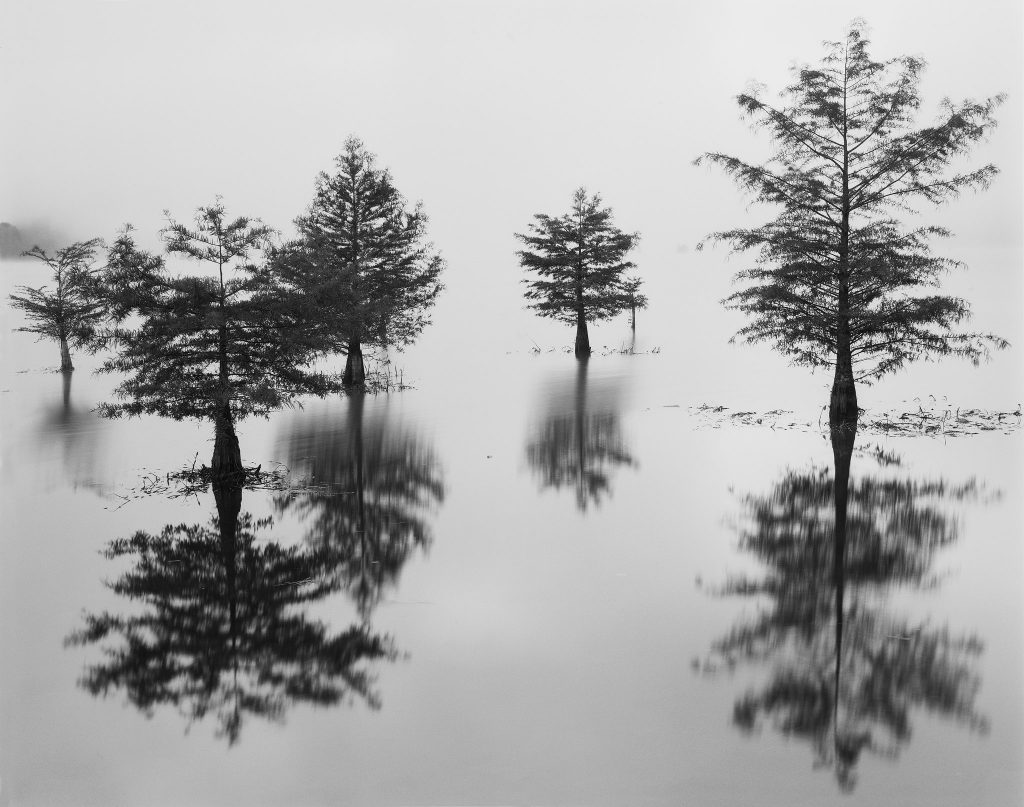How I got this picture - Alan Brock Posted On 7th December 2017 To How I got this picture

Tranquility
Alan Brock searches for a sense of calm in his images. He shares how he achieves it below
Technical info
Film Used: Delta 100
Format: 4x5
Camera: Intrepid 4x5 II
Lens: Nikkor 180mm f/5.6. Shot at f/45
Exposure time: 40s
Other equipment: Gitzo 1545T Tripod
Location: Parksville Lake Tennessee
Firstly, tell us the story behind this image. What inspired you to shoot it?
I like to search for a sense of calm in my images. In a lot of ways this fits my personality, and I believe that a photographer’s personality eventually starts to show through in their work.
My absolute favorite time to day to shoot is early morning, when you have to arrive before the sun comes up. I love being able to experience the day waking up around me; the calm is palpable. In many ways, this sense of calm is always present in reflections shots. After all, at the most basic level, the water has to be completely still for any sense of reflection.
As I was driving past this lake one day, I saw this small grove of trees at the edge of the water and knew that there was likely an image there.
Did you come across any challenges?
The biggest challenge was determining which light I wanted to shoot this scene in. It sets up nicely for a sunset shot with the sun setting directly behind the trees in the water. However, beautiful sunsets are hard to predict, and with this location being about an hour and a half drive from my house, I needed something more predictable.
I then envisioned shooting it in fog. The fog would hide the mountains surrounding the lake and place all the emphasis on the trees and their reflection. Once I decided that, it was simply a matter of waiting for cooler weather so that the conditions would be right for a foggy morning.
Another minor challenge was lens selection. I had initially envisioned a shot of a single tree. However, I didn’t own a long enough lens to isolate just one tree. Therefore, I carefully composed a small group of trees,making sure not to clip any branches around the edges of the frame
What process did you use?
Metering was fairly straightforward. I metered off the brightest part of the fog just above the trees. I placed this in Zone VIII; I knew I wanted it to be bright white. The darkest parts of the trees were approximately 4.5 stops darker than the fog. This meant they fell somewhere between Zones III & IV, perfect for retaining just enough details. The meter reading plus taking reciprocity failure into account resulted in a forty second exposure time at f/45.
How did you process it?
For developing, I use Ilfosol-3 and BTZS tubes. I like this method because of the minimal chemistry requirements and the ability to do everything in the light once the film is loaded.
I use Ilfostop and Iford Rapid Fixer to complete development. Both of these are accomplished in trays. I don’t have a full darkroom setup, so I use a hybrid analog/digital process.
Once the film has been developed and dried, I scan the negative using an Epson V700 flatbed scanner. I try to keep my editing true to what is possible in a legitimate darkroom. In Adobe Photoshop, I will clean dust and scratches, make contrast adjustments, and sharpen the image. I try to keep my editing as minimal as possible.
What about printing?
It is a goal of mine to one day have a full darkroom, but for now I have yet to truly print any of my shots.
About The Author

Alan Brock
I started shooting large format film about 4 years ago. Tennessee is home, but I have fallen in love with the deserts of the American Southwest. I venture out there as much as possible.
When I’m not under a dark cloth, my wife and I stay busy chasing around our 3 children.
Social Links
Website: http://www.alanbrockimages.com/
YouTube: http://www.youtube.com/c/AlanBrockImages
Instagram: https://www.instagram.com/alanbrockimages/
Twitter: https://twitter.com/AlanBrockImages
Facebook: https://www.facebook.com/alan.brock.94







